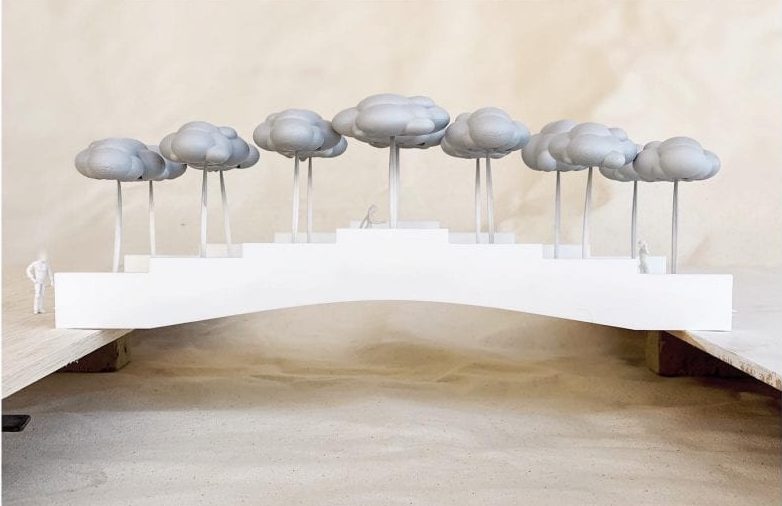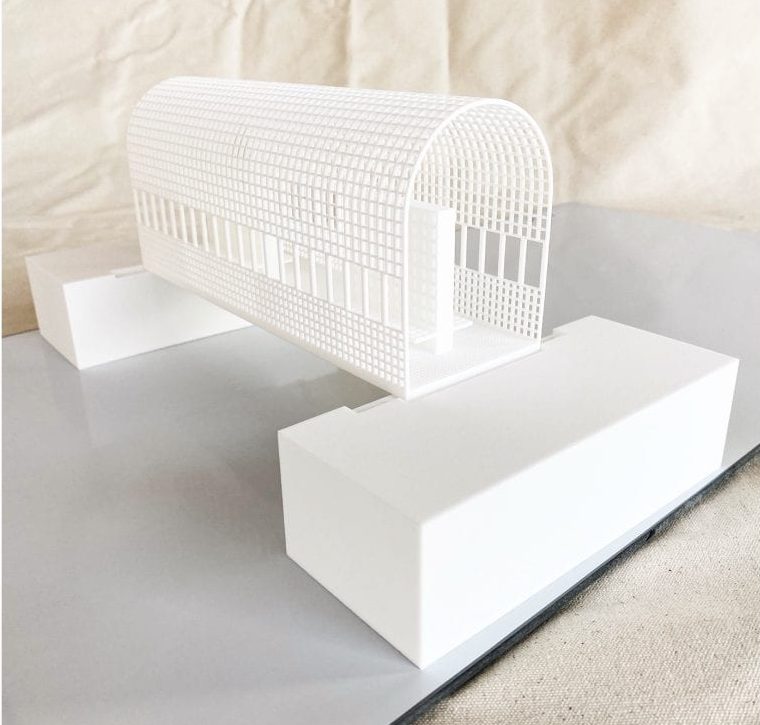Pedestrian Bridges for Qatar
Transition by Thomas Modeen the founder of Architects Independent is a self-initiated project that aims to tackle the current lack of facilities while crossing urban barriers.
Thomas Modeen is an architect and designer, and a founder (along with Maysaa Al-Mumin) of an interdisciplinary design and film making collective called Architects Independent. Thomas has been finding conceptual solutions for specific challenges in the country, like the Salt Tower imagined to be placed by Qatar’s west coast, surrounded by a salt farm, which provides the raw material – the bricks – that make up the bulk of the Salt Tower’s walls. An indirect indication to the amount of energy being used in the desalination plants, the by-product of which is the salt that he has used to build the bricks of the Salt Tower.
 Thomas is also the Director of QSS, a vocational school for the creative industries currently under development for Qatar Museums.
Thomas is also the Director of QSS, a vocational school for the creative industries currently under development for Qatar Museums.
“Transition is a self-initiated project that was catalyzed by a current lack of ambulatory means for crossing urban barriers (mainly waterways and busy streets) in Doha, Qatar. In addition, it also aims to create and define such transitions as memorable urban nodes – architectural interventions that perform as ‘architectural follies’ – in their own right,” says Thomas, whose work aims to find solutions to many matters of public concerns.
Though no specific locations are defined for each design, they all, nevertheless, have been catalyzed by specific locations or contexts particular to Doha. These factors have also be determined by elements such as sites or contexts that might be lacking, he explains.
Thomas has designed the bridges as subtle experiences, each different from the other, but all of them elevates the mundane locales through the design interventions, that even encourages interactions with the users.
 “ The Finnish architectural couple Reima and RailiPietilä stated, loosely paraphrased, that when planning a building onto a beautiful site, one should not build onto its most beautiful section, but instead the building should occupy its most unattractive part, and make it beautiful through the architectural intervention. A similar notion has also been applied in the instance of these pedestrian bridges. Here, alongside finding locations that would benefit from a bridge, many of the locales that catalyzed these designs were, at best, mundane in their character. Here these bridges aim to provide a subtle experience that, in the act of transcending from one place to another (as all bridges inevitably do) reveal something innate about their locale that one haven’t necessarily been aware of before,” he says.
“ The Finnish architectural couple Reima and RailiPietilä stated, loosely paraphrased, that when planning a building onto a beautiful site, one should not build onto its most beautiful section, but instead the building should occupy its most unattractive part, and make it beautiful through the architectural intervention. A similar notion has also been applied in the instance of these pedestrian bridges. Here, alongside finding locations that would benefit from a bridge, many of the locales that catalyzed these designs were, at best, mundane in their character. Here these bridges aim to provide a subtle experience that, in the act of transcending from one place to another (as all bridges inevitably do) reveal something innate about their locale that one haven’t necessarily been aware of before,” he says.
These experiences are simultaneously choreographed and serendipitous, in that the designs frame an experience, but do not dictate exactly how it will, or should, occur.
- The Three Bars Bridge
Thus, for example, one of the proposed bridges acts as a ‘pedestrian-blinker’ limiting what someone crossing the bridge can see to what’s happening below framing and focusing their sensorial impressions to sensing, seeing, hearing, even smelling the water through the design’s perforated floor (see the ‘Three-Bars Bridge’), to designs that themselves become the performance (see the Twist-Bridge, Roto-Bridge or the Waterfall Bridge).
“Some of the designs encourage extended engagement, transforming into destinations in their own right, like the Beach-Bridge, Library-Bridge, or the Park-Bridge, others just celebrate an intrepid but subtle ascetic quality, becoming ‘urban-artifact’ that simply engage one through their innate presence, their aesthetic-mien, as you would see in the LaceTruss Bridge, Intersection Bridge, or the Gridded-Wedge Bridge.
- The Intersection Bridge
“As it stands, all the bridge designs have been self-initiated design exercises, but wouldn’t it is nice to see them implemented here in Doha,” he asks.
- The Parapet Bridge
And we, the users, are left to dream…
All the models are 1:50 scale representations made out of 3D printed nylon.
All designs by Thomas Modeen/ Architects Independent






























